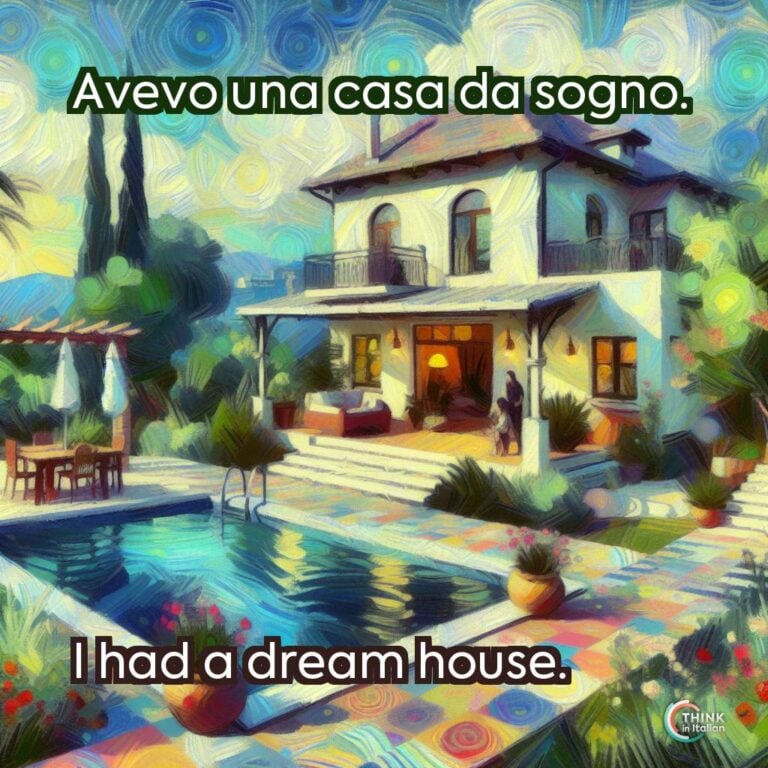“Da” in Italian
The Italian da is a very commonly used preposition and it has many meanings and uses. In this lesson, I will show you the different contexts where you can use it.
An important thing to keep in mind is that, as all prepositions, whenever it can be combined with a definite article da must do so, becoming preposizione articolata.
| da + il | dal |
| da + lo | dallo (dall’) |
| da + la | dalla (dall’) |
| da + i | dai |
| da + gli | dagli |
| da + le | dalle |
How to use “Da” in Italian
“Da” for Origin or Source
This is the most common use of da, and it corresponds to the English “from” or “by”. It can be used to describe both the origin of a movement and the source of an action, like in passive structures.
Siamo partiti da Parigi
We left from Paris
Io vengo dalla Spagna.
I come from Spain.
Luigi viene da una buona famiglia.
Luigi comes from a good family.
Questo libro è stato scritto da Pirandello.
This book was written by Pirandello
“Da” With Expressions of Time
Da is also commonly used with expressions of time to indicate how long something has been going on, and can be translated in English as “for” or “since”.
Studio Italiano da tre anni.
I have been studying Italian for three years.
Non li vedo da anni.
I haven’t seen them in years.
Non mangio carne dal 2019.
I haven’t eaten meat since 2019.
When used as expressions of time, the prepositions da and per have similar translations but different uses. This is why I believe it is important to understand their differences.
Something I always tell my students is that da is used with the present tense while per is used with the past tense, as you can see in the examples below:
Gioco a calcio da 1 anno.
I have been playing football for 1 year.
Meaning I started playing football one year ago and I still play it in the present.
Ho giocato a calcio per 1 anno.
I played football for 1 year.
Meaning I spent one year playing football somewhere in the past.
Da can also be used to indicate a definite point in time. In this case, we use imperfetto (imperfect) + a period of time.
Da bambina mi piaceva sciare.
As a child, I loved to ski.
Da piccoli non andavamo mai al mare.
We never went to the seaside when we were little.
“Da” for Destination
You probably know already that the prepositions that are mostly used to indicate a destination are in and a. However, also da can be used with the same purpose, but specifically when the movement is towards a person’s house or workplace.
Stasera vado a cena da Marco.
Tonight I’m going to Marco’s place for dinner.
Domani Giacomo va dal dentista.
Tomorrow Giacomo will go to the dentist.
A) Dove siete?
A) Where are you?
B) Siamo da Giada.
B) We’re at Giada’s place.
“Da” for Purpose
When followed by a verb in the infinitive, da describes the purpose of something.
Ho ancora tantissime email da scrivere.
I still have so many emails to write.
Al cinema c’è un bel film da guardare.
There’s a good movie to watch at the cinema.
The same occurs when it is used with nouns:
Sala da pranzo
dining room
Carte da gioco
playing cards
Other uses
Other two circumstances where this Italian preposition can be used are:
- Cause or reason for something
Mi sono addormentato dalla noia.
I fell asleep from boredom.
- Describe qualities in people
Una donna dagli occhi scuri.
A woman with dark eyes.
Un bambino dai capelli biondi.
A child with blond hair.
Learn how to use per vs da in Italian.



